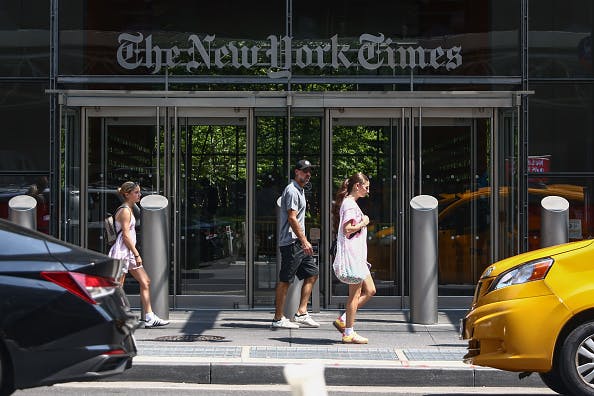The New York Times is a games company with a newspaper side hustle
The Times now has more non-news subscribers than news-only subscribers.
In October 2021, Reddit software engineer Josh Wardle published his newly created word game, “Wordle” (a play on words for his name), on his website, and the game reached 90 users by November 1. One month later, the game had 300,000 daily players, and a week after that, the number of daily players reached 2 million. Just three months after publishing his now-viral game online, Wardle sold Wordle to The New York Times for “low seven figures.”
At the time, the decision for a media company to spend millions to acquire a free game raised questions, but two years later, it looks like the Times’ bet on games and other alternative products has paid off. While the media industry of the 2020s has dealt with widespread layoffs and declining readership, The New York Times is doing better than ever. Its stock price just notched an all-time high, Q1 revenue increased by approximately $33 million year over year despite a decline in advertising revenue, and net income nearly doubled from $22 million to $40 million.
One reason that the Times has succeeded while other media companies have struggled is that the Times has focused on growing its non-media offerings over its news product. According to its Q1 2024 report, The New York Times now has more single-product subscribers for its non-news products — such as The Athletic, Cooking, Games, and Wirecutter — than it does news-only subscribers…
...and the number of other single-product subscribers this year outnumbers total bundled subscribers in December 2022 by 386,000. News-only subscribers have decreased by almost 40% since September 2022, while bundle and other single-product subscriptions have exploded.
Publishers across the media industry have tried to pivot from advertising-first to subscription-first models as social media has permanently disrupted the publisher-advertising business model, but readers are only willing to subscribe to so many publications, making subscription growth a tough problem to solve.
The Times’ strategy of building an increasingly diversified product suite for its subscribers has proven to be a genius solution. Most readers aren’t going to spend hundreds of dollars per publication to subscribe to The Times, The Washington Post, The Journal, The Atlantic, and countless other publications, but if you include crossword puzzles, spelling bees, and “easy weeknight” recipe guides with your subscription, some of those readers will opt for your publication over the competition.
Everyone talks about the pivot from physical to digital media, but I think the bigger shift in media has been advertisement-subsidized reporting to sudoku-subsidized reporting. Funny enough, the latter feels like a purer model, no?
